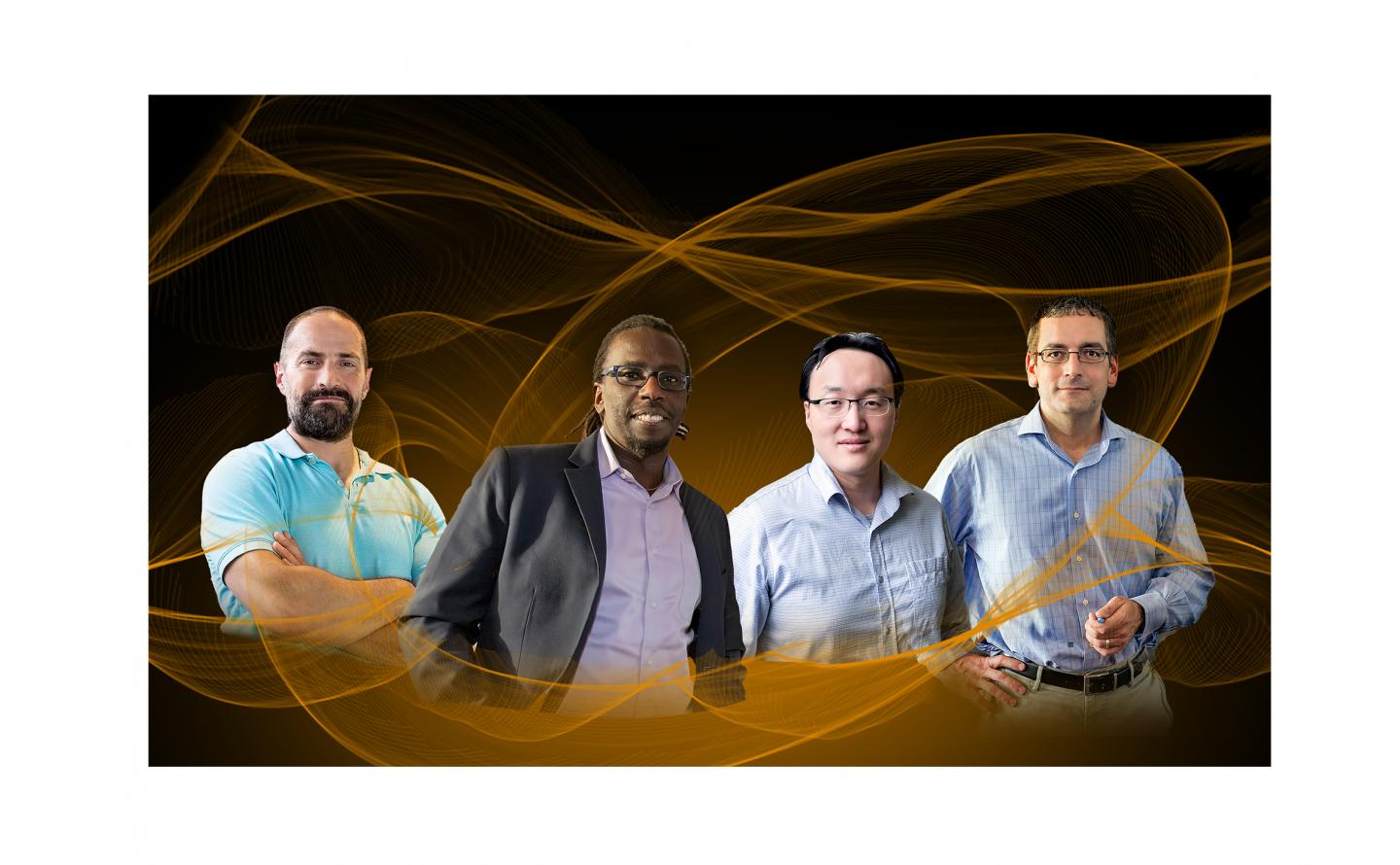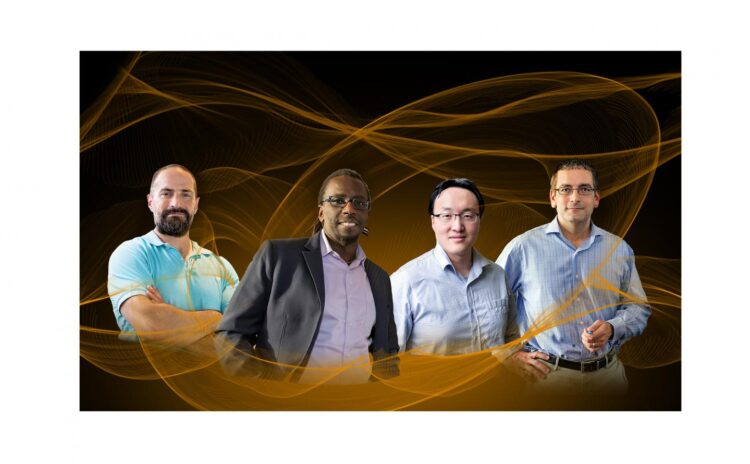
Credit: Photos and collage by Elle Starkman/PPPL Office of Communications
World-class expertise in confining and stabilizing the plasma that fuels fusion
reactions has brought two new public-private collaborations to the U.S. Department of Energy’s (DOE) Princeton Plasma Physics Laboratory (PPPL). The new awards, made by the DOE’s Innovation Network for Fusion Energy (INFUSE) program, will bring together PPPL physicist Walter Guttenfelder with Britain’s Tokamak Energy, and PPPL’s Zhirui Wang and Dylan Brennan with General Fusion of Canada.
PPPL’s world-class modeling skill
The one-year collaborations aim to advance efforts to capture and control on Earth the fusion energy that powers the sun and stars. “These partnerships recognize PPPL’s world-class skill in modeling fusion plasmas,” said Ahmed Diallo, a PPPL physicist and deputy director of the INFUSE program. “The goal of INFUSE is to leverage the capabilities of national laboratories to enhance private fusion development.”
Fusion combines light elements in the form of plasma ¬– the state of matter composed of free electrons and atomic nuclei that makes up 99 percent of the visible universe — to produce vast energy. Scientists around the world are seeking to duplicate the process as a virtually unlimited source of energy for generating electricity.
The private developers are joining with PPPL for modeling analysis. Tokamak Energy, a 2009 spinoff from Britain’s Culham Centre for Fusion Energy, is developing a compact spherical tokamak with high-temperature superconducting magnets that can reduce the size of future fusion reactors. The company has turned to Guttenfelder to model the sources and strength of the microturbulence that causes heat to escape from tokamaks.
Modeling Tokamak Energy configurations
Guttenfelder will conduct gyrokinetic simulations, which model plasma particles orbiting magnetic field lines, to predict microturbulent behavior. “This is my expertise, especially for spherical configurations,” he said. “The bulk of my responsibilities will be to perform these simulations and modeling analyses for conceptual reactor configurations to probe which might perform most optimally.”
General Fusion, founded in 2003, is pursuing a novel approach to the development of fusion energy. Its facility, called a magnetized target fusion (MTF) machine, uses pistons to compress plasma tightly enough to produce fusion energy. A key requirement of this technique is for the plasma to remain stable during compression. The company is therefore turning to PPPL’s Wang and Brennan, physicists on the forefront of stability theory, to help achieve this goal.
The two physicists will work with General Fusion to apply advanced stability theory to prevent instabilities from forming during compression scenarios. Wang was a major developer of the MARS code for analyzing instabilities, as well as a developer of the RDCON code with similar capabilities. Brennan, a leading expert on stability physics, has long been collaborating with General Fusion.
Codes to support General Fusion
The PPPL physicists will now modify and apply the MARS code to plasma compression and will provide technical support for application of the MARS and RDCON codes to experiments. “Dylan and I will run these codes to support General Fusion and we’ve already started discussing work for the project,” said Wang. Concurred Brennan: “Zhirui is entering into the same collaboration I’ve been working with for years and we’ll be working on it together.”
###
The two new projects bring to six the number of INFUSE collaborations with private industry that PPPL has been awarded since the DOE launched the program in 2019. Previous PPPL collaborators, working with the companies TAE Technologies, Commonwealth Fusion Systems and HelicitySpace, include physicists Elena Belova, Nicola Bertelli, Mario Podesta, Gerrit Kramer and engineer Clement Bovet.
PPPL, on Princeton University’s Forrestal Campus in Plainsboro, N.J., is devoted to creating new knowledge about the physics of plasmas — ultra-hot, charged gases — and to developing practical solutions for the creation of fusion energy. The Laboratory is managed by the University for the U.S. Department of Energy’s Office of Science, which is the single largest supporter of basic research in the physical sciences in the United States and is working to address some of the most pressing challenges of our time. For more information, visit energy.gov/science.
Media Contact
John Greenwald
[email protected]
Original Source
https:/






